
The Great Tech Story, the Computer History Museum’s world in Minecraft: Education Edition, inspires and empowers students from ages 8–16 to become engaged digital citizens. They will be inspired to make and user technology that impacts the world for the better. Students navigate the virtual museum to learn about the impact of computing technology and its relationship between the past, present, and future. Students can explore the artifacts on display and interact with non-player character (NPC) innovators and click links to “Learn more.”
Five of the NPCs invite students to teleport themselves to immersive experiences to learn hardware and software concepts, meet a startup team, debate ethics in tech, and see how technology is used in daily life.
After completing the five experiences, students engage in a build challenge that focuses on collaboration, critical thinking, and creativity, to build their capacity as active problem solvers and future innovators.
Build challenges are available on our website here.
Check back over time for new build challenges.
Educators may choose to facilitate The Great Tech Story in a variety of ways.
Five NPCs located throughout the exhibits teleport students to immersive experiences to explore different topics related to computing and technology.
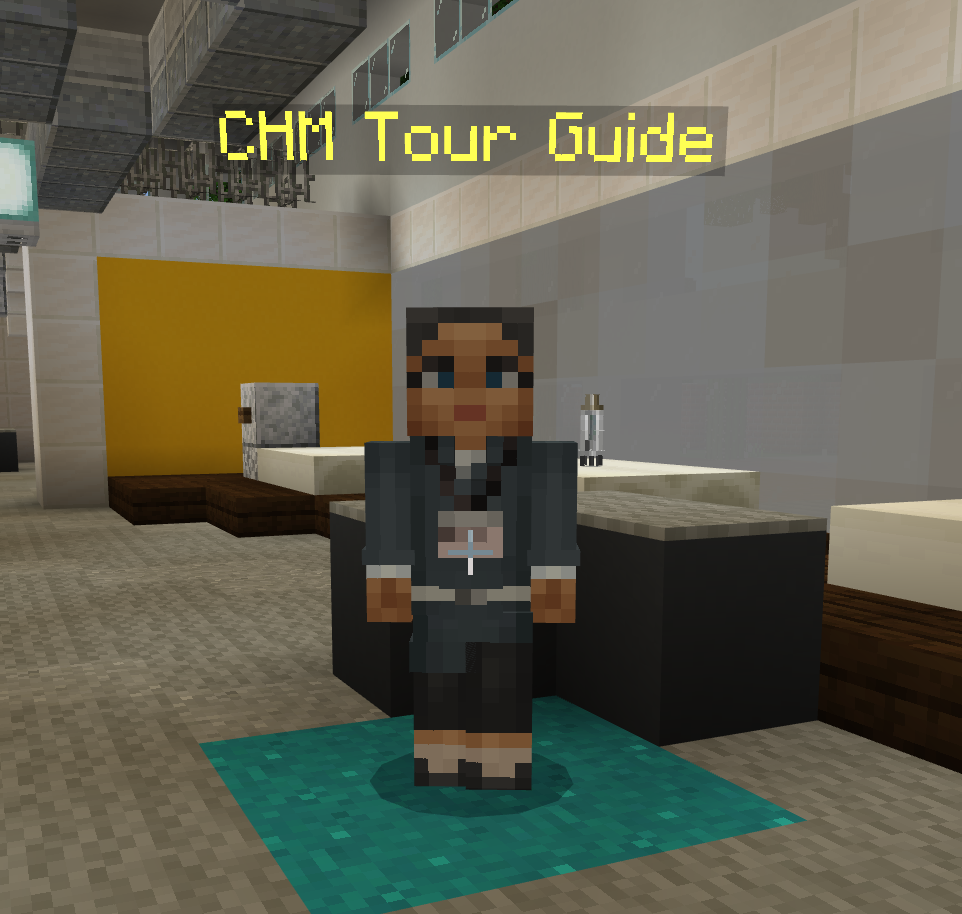 |
CHM Tour GuideLocation in exhibit: Relay Teleports to: The Hardware Garage |
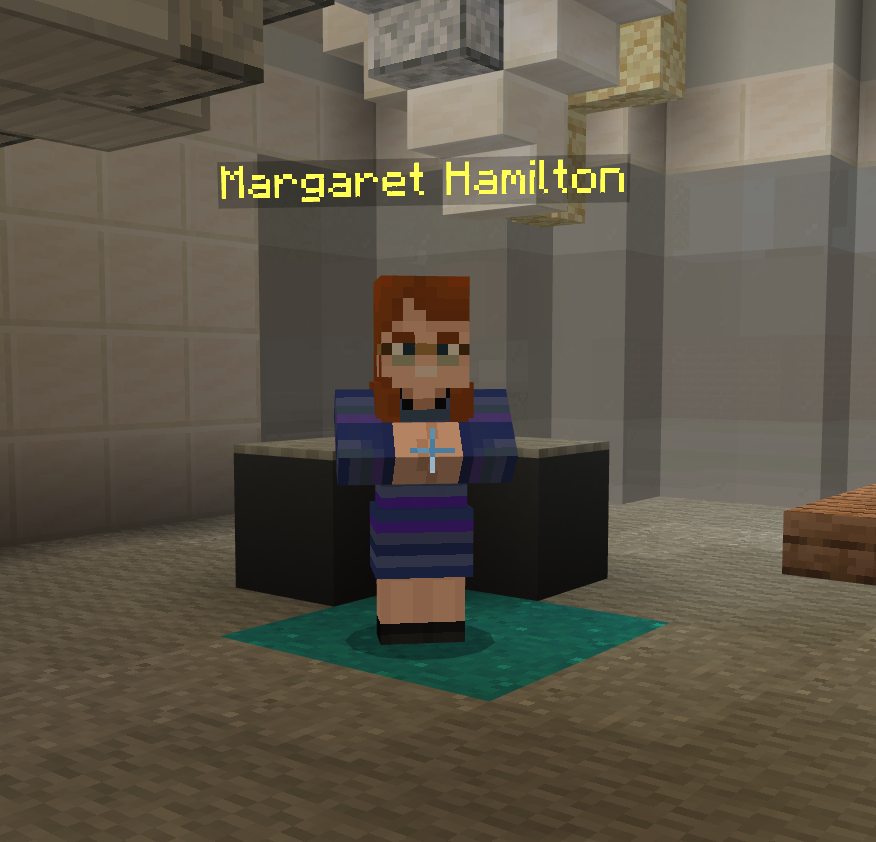 |
Margaret HamiltonLocation in exhibit: Lunar Lander Teleports to: The Software Lab |
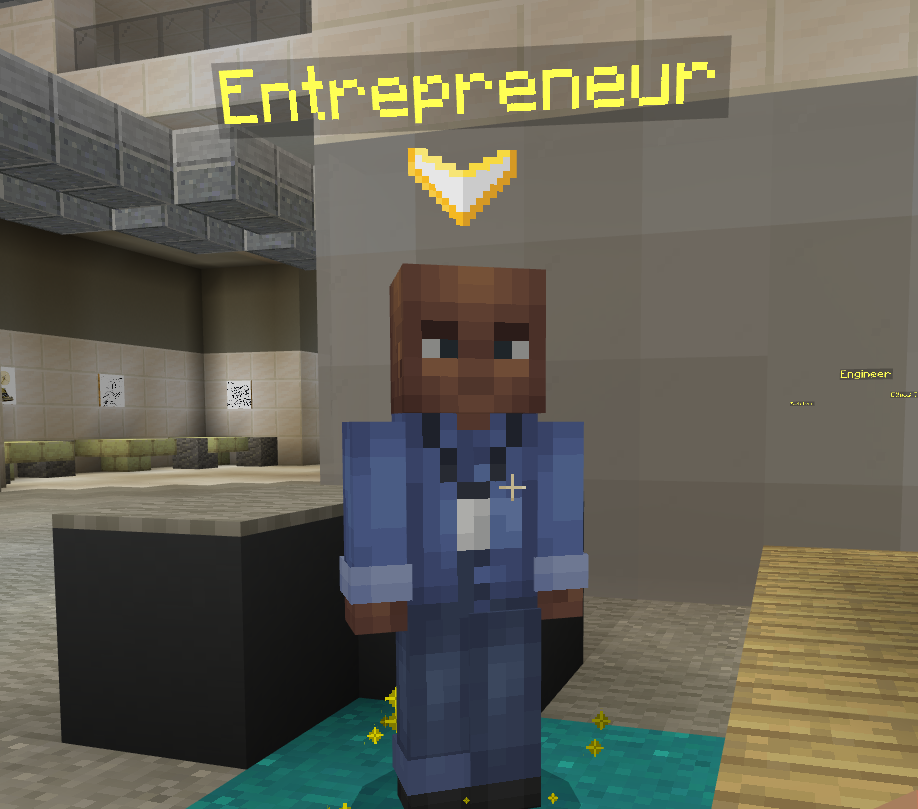 |
EntrepreneurLocation in exhibit: Palm Pilot Teleports to: The Startup Workspace |
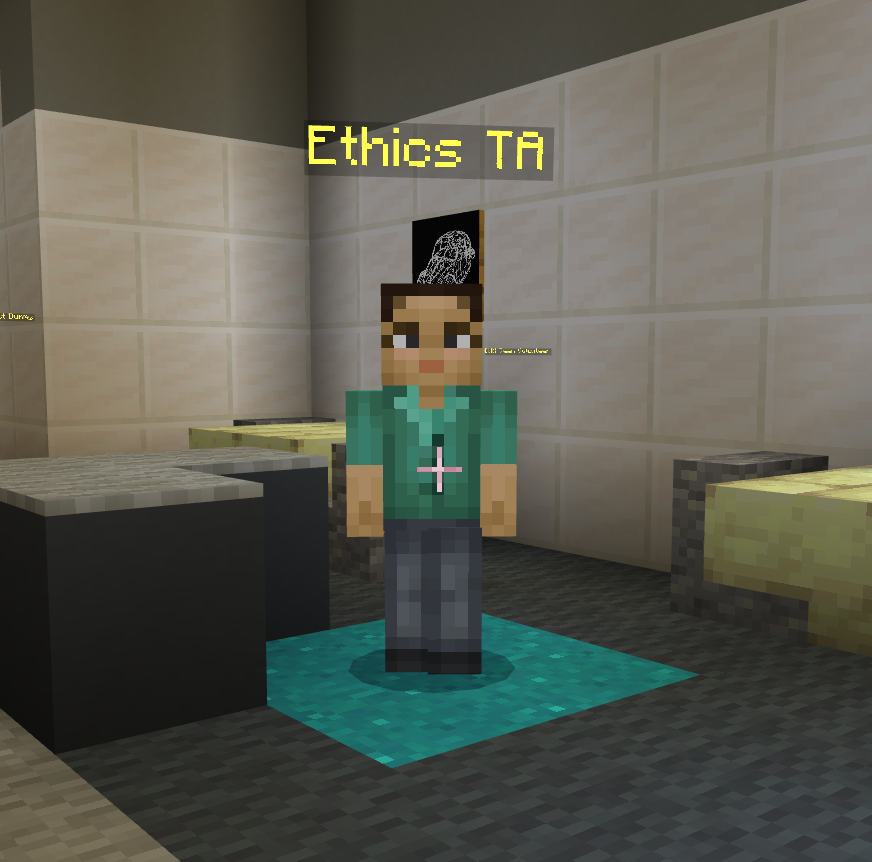 |
Ethics TALocation in exhibit: Self-driving Car Teleports to: The Ethics Forum |
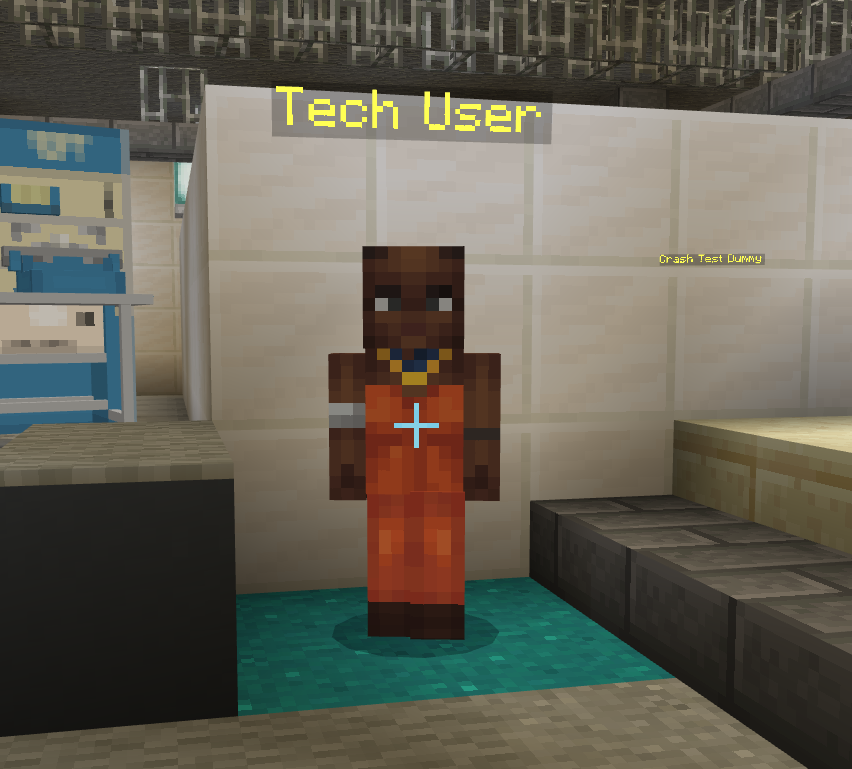 |
Tech UserLocation in exhibit: Texting Teleports to: The Impact House |
Learn more about what students will encounter in the immersive experiences.
In this experience, students will meet historic technology innovators and learn about some of the key hardware components of computers.
Learning Objectives:
Learn about basics of hardware—internal and external.
Engage with interactives and content to explore concepts of: relays and switches; AND/OR logic gates; components of a computer; microchips and Moore’s law; networking.
In this experience, students will meet historic technology innovators and learn about some of the key concepts of computer software.
Learning Objectives
Learn that software is a set of instructions or code that a machine or computer can process to perform a function.
Learn what code and algorithms are and where they came from.
Engage with interactives to explore concepts of: automation; punched cards; stored programs; branching; computer languages and compilers.
In this experience, students will meet a team of five NPCs discussing “Project X.” In the team’s workspace, students engage with each NPC to learn about their roles and responsibilities in the startup company, the challenges they face in the engineering design process, and the tech innovator’s journey.
Learning Objectives
Explore and understand the engineering design process and the journey of an idea from a prototype to a product.
Learn about ways that new ideas and companies get funded.
Understand how team members collaborate and contribute unique perspectives in the development of a product.
In this experience, students will meet a team of five NPCs discussing important issues and values that are important to consider when technology is designed, built, used or reimagined.
Learning Objectives
Learn to think critically when building and using technology.
Explore concepts of transparency, privacy, access, intentions, and diversity.
In this experience, students will meet a family of six, including a grandmother, mother, father, and three kids. Each character shares something about the technology they are using in their daily life.
Learning Objectives
Learn and think critically about the intersection and impact of technology with real people and the world.
Consider how technology can assist people with different abilities and needs.
The Great Tech Story and its accompanying build challenges align with ISTE and CSTA standards. Facilitated by educators, students will explore technology through a variety of lenses and practice skills such as critical thinking, problem solving, creativity, collaboration, and communication.
2-IC-20: Compare tradeoffs associated with computing technologies that affect people’s everyday activities and career options.
2-IC-21: Discuss issues of bias and accessibility in the design of existing technologies.
3B-CS-02: Illustrate ways computing systems implement logic, input, and output through hardware components.
1e (Computational Thinking): Recognize how computing and society interact to create opportunities, inequities, responsibilities and threats for individuals and organizations.
4b (Computational Thinking): Design authentic learning activities that ask students to leverage a design process to solve problems with awareness of technical and human constraints and defend their design choices.
4c (Computational Thinking): Guide students on the importance of diverse perspectives and human-centered design in developing computational artifacts with broad accessibility and usability.
6c: Create learning opportunities that challenge students to use a design process and computational thinking to innovate and solve problems.
Learn more about some of the game’s non-player characters, or NPCs (webpage).
A glossary of terms used in the game. Download Vocabulary List (PDF).
A guide to all artifacts in the game. Download the Artifact List(PDF).
Download this Educator Resource Guide (PDF).
Download the Student Resource Guide (PDF).